Have you been feeling stressed lately? Maybe a little overwhelmed?
Maybe it’s time to step away from the hustle of school, work, or chores, and onto that yoga mat for some relaxation. With a year like 2020, we could all use a bit of a break!
Yoga is an ancient practice used to reduce stress and improve emotional, mental, and physical health. For centuries, people from all over the world have downward-dogged themselves into relaxation and stress relief.
But you probably didn’t realize that a good yoga session can also impact your oral health in a few simple and unexpected ways.
Get your daily dose of rejuvenation while improving the health of yoursmile with these surprising health benefits of yoga.
What are the Health Benefits of Yoga?
From a whole-body perspective, practicing yoga and daily stretching comes with countless positive effects on your body and mind.
A consistent yoga practice can help with everything fromweight loss and maintaining your metabolism, to protecting your body from injury and increasingyour flexibility.
Many who do yoga also enjoy incorporating deep breathing or meditation into their time on the mat, which can help promote a state of calm and create a more positive outlook.
Yoga can help you sharpen your concentration before a long day of work, or unwind before you crawl into bed for better sleep and relaxation.
Overall, yoga is an excellent habit if you’re looking to improve your physical and mental well-being.
What Does Yoga Have to do with Oral Health?
Surprisingly, there are many ways that yoga can benefit your oral health. Paired with regular brushing, flossing, and check-ups with your orthodontist, yoga can help elevate your dental health in a variety of ways.
Studies have shown that people who are feeling stressed out are more likely to neglect taking care of their teeth.
Sometimes if you’re overwhelmed, you can accidentally skip brushing or flossing. This can lead to dental issues like tooth decay or canker sores. And when tooth decay is left untreated, this can lead to more serious (and expensive) issues, like gum diseases.
Since approximately 3000 BC, yoga has combined postures and breathing techniques that align your body and mind — including parts of your mouth like your jaw and tongue.
This low-impact exercise helps with blood flow and circulation, and preserves cellsin your mouth that can get broken down by chronic stress. Not only is this process rejuvenating to your mouth in and of itself, but less stress means more mental clarity to stay on top of your daily oral health routine.
It’s a win-win!
Decreased Likelihood of Periodontal Disease
A staggering 10-15% of the world population suffers from periodontitis. This disease causes painful swelling and bleeding in your gums, and can make brushing and flossing very uncomfortable.
One of the biggest causes for developing this disease is ongoing stress and anxiety. When you’re under stress for a long time, your immune system can have trouble regulating the bacteria in your mouth.
Combined with a good brushing and flossing routine, yoga practice enables your body to recover from stress, which can help your mouth regulate bacteria better. That could mean less tooth decay and less cavities down the line.
Lower Inflammation in Your Body
When you’re anxious or tense, your body produces an influx of cortisol, which is a stress hormone. Too much of this natural hormone can cause parts of your body to swell up — including your gums.
Gum swelling can come with more serious and hard-to-treat oral diseases, like periodontal disease and gingivitis.
Yoga actively decreases the cortisol in your body, helping you relax while lowering inflammation. This can come in handy if you suffer from headaches or frequent jaw pain.
Doing even a 5-minute yoga video can relax stiff muscles and help you unclench your jaw, or stop a painful migraine in its tracks.
Increase Saliva Production
As strange as it may sound, saliva production plays a big role inyour oral health.
The deep breathing needed to do yoga postures stimulates saliva production in your mouth, washing away harmful bacteria and keeping your teeth healthy.
In a recent study, 15 healthy people were tested before and after doing 90 minutes of yoga. The study found a much higher amount of saliva after they finished doing yoga.
Yoga incorporates special breathing techniques that not only helps your mouth make more saliva, but also prevents bad breath! Not a bad perk.
Improve Overall Posture
Maintaining a healthy posture is a common struggle for many adults, especially those who are slumped over at computers all day or have labor-intensive jobs.
Bad back posture can lead to unexpected jaw pain, which can result in an over or under bite, or teeth grinding.
Many yoga movespromote strengthening your posture and lengthening your spine, keeping your jaw position aligned and where it should be.
Another bonus: You might also notice your confidence increase as you hold your chest high around others!
Maintain Daily Stress Levels
While yoga is beneficial for your health in a variety of ways, it’s well-known for its ability to regulate stress and tension throughout the body.
When you’re stressed, you may turn to unhealthy habitslike emotional eating or choosing sugary snacks. As a result, you can become more prone to cavities and other oral diseases.
You’re also less likely to care for your oral health when your mindis elsewhere or overcome by anxiety. Unlocking your sympathetic and parasympathetic nervous systems, yoga relaxes your mind while promoting sustainable wellness in your entire body.
If you’re feeling more stressed than usual this year, don’t sweat it. Give your body (and your smile) a helping hand with a simple and rejuvenating yoga practice that will leave you feeling better than ever.

